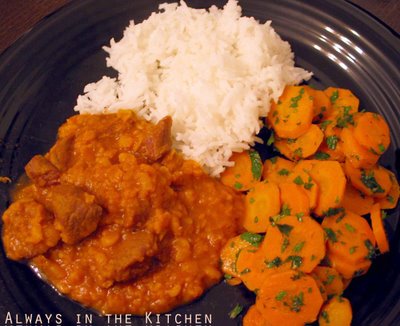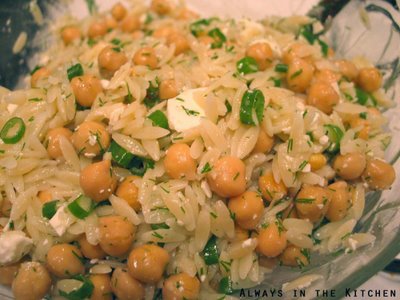 I've been longing to try making this since I first tried it in one of the few Persian restaurants here in Vancouver. The version that I had, I think may have not had paprika (and perhaps less, if any tomato), because it was a much yellower colour. The flavour, a lovely jumble of lamb with a lively spang of lime, is quite delicious. I was also delighted to discover that it is no more difficult to make than any other stew in my collection.
I've been longing to try making this since I first tried it in one of the few Persian restaurants here in Vancouver. The version that I had, I think may have not had paprika (and perhaps less, if any tomato), because it was a much yellower colour. The flavour, a lovely jumble of lamb with a lively spang of lime, is quite delicious. I was also delighted to discover that it is no more difficult to make than any other stew in my collection.I pored over online-recipes until I found a consensus of ingredients and a method that looked sound, and then tweaked it to fit my own schedule and laziness needs. I am given to understand that this dish is usually cooked gently on direct heat (i.e. the stovetop), but I have modified it so that most of the cooking is done indirectly (in the oven), where I need not have to stir it so often.
While the combination of onions (quite a lot) and split peas - a pulse, true, but also vegetable in nature - I decided to add one more vegetable, and the traditionally accompaniment of white rice. The carrots are sauteed in a mixture of olive oil and spices, then squirted with lime juice and simmered in just enough water so that when it cooks down to a glaze, the carrots are just tender. You can vary the spices to go with just about any main course.
Khoresht Ghaimeh
serves 4 - 6
1 cup yellow split peas
2 tablespoons vegetable oil
750 grams cubed boneless lamb meat (leg or shoulder)
2 large onions, thinly sliced into half-moons
2 tablespoons tomato paste
2 tablespoons paprika
1 teaspoon turmeric
2 1/2 cups chicken stock
salt to taste
pepper to taste
1 - 2 limes, zest & juice
Rinse the split yellow peas thoroughly, and place in a small saucepan, covered with about an inch of water. Bring to a vigorous boil, turn off the heat, cover the pan and let stand until you are ready to use them, later in the recipe.
Heat a large iron skillet over medium-high, and sear the lightly salted lamb chunks (in small batches). Remove to an oven-proof casserole dish or dutch oven. In the skillet that was used for searing the lamb, add the oil and turn the heat down to medium. Add the onions, and sauté until they begin to caramelize and turn translucent, and then add the tomato paste, paprika, turmeric, lime zest and pepper. Sauté for another couple of minutes, stirring constantly, and then scrape into the pot that contains the lamb. At the chicken stock to the emptied skillet and stir over medium heat, scraping up all of the stuck-on spices, tomato paste and lamb fond. When it has been all loosend and the stock comes to a boil, pour it over the lamb and onion mixture. Cover the pot and place in a 350 F oven for 1 1/2 hours, until the lamb is very tender.
Drain the hot-soaked yellow split peas, and add them to the lamb stew. Stir until well integrated, and continue to cook (covered) in the oven for another 20 minutes, or until the peas are tender. Stir in the lime juice to taste, and let stand for a couple of minutes, to integrate the flavours. Serve with white rice.
If you by any chance have access to dried, crushed limes, I am told that is the authentic seasoning, rather than zest and juice. Add them with the paprika, et al. this dish also often has small chunks of potato, added when the peas are added. I didn't have potato, so I omitted it, and didn't miss it.















